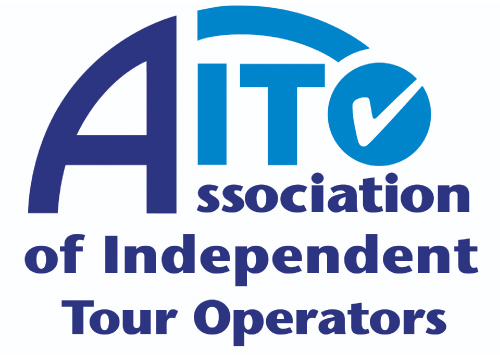Here’s a brief guide to Uruguay:
Location: Uruguay is a country located in South America, situated between Brazil to the north and Argentina to the west and south. It has a coastline along the South Atlantic Ocean to the east.
Capital: Montevideo
Official Language: Spanish
Population: Approximately 3.5 million people (as of my last update in September 2021).
Currency: Uruguayan Peso (UYU)
Time Zone: Uruguay Standard Time (UTC-3)
Geography: Uruguay is known for its diverse landscapes. The country features rolling plains and low hills in the interior, while the southern region is marked by fertile plains. Uruguay’s eastern border is primarily made up of beautiful beaches along the Atlantic coast. The country is also home to the Uruguay River, which forms its western border with Argentina.
Climate: Uruguay has a temperate climate, with warm summers and mild winters. The coastal areas benefit from a maritime influence, making them milder and more humid than the interior.
Culture: Uruguayan culture is heavily influenced by European traditions, particularly Spanish and Italian. The country is known for its rich literary and artistic heritage, with many famous writers and artists emerging from Uruguay. Football (soccer) is a major part of the culture, and the country has a strong footballing tradition.
Cuisine: Uruguayan cuisine is known for its beef dishes, particularly “asado” (barbecue). Beef is a staple in the Uruguayan diet, and you’ll find a wide variety of meat cuts prepared in different ways. Traditional foods also include “milanesa” (breaded and fried meat), “choripán” (sausage in a bread roll), and “empanadas” (savory pastries).
Tipping: Tipping customs in Uruguay are similar to those in many other countries, and tipping is appreciated for good service. Here are some guidelines for tipping in Uruguay:
- Restaurants: In restaurants, it is customary to leave a tip of around 10% to 15% of the total bill if a service charge is not already included. Some restaurants may include a service charge, so check the bill carefully. If you received exceptional service, you can certainly leave a larger tip to show your appreciation.
- Cafés: At cafés, it’s common to leave a small tip, usually rounding up the bill to the nearest peso or leaving some loose change on the table.
- Bars: When you order drinks at a bar, tipping is not as common as in restaurants, but you can leave small change or round up the bill as a token of appreciation if the service was good.
- Hotels: In hotels, it’s customary to tip hotel staff for exceptional service. You can tip bellhops who assist with your luggage and housekeeping staff who clean your room. A few pesos are appreciated for each service.
- Tour Guides and Drivers: If you take guided tours or hire drivers, it’s polite to tip them for their services. The amount can vary depending on the length and quality of the service, but 10% of the tour cost or fare is a common guideline.
- Taxi Drivers: Taxi drivers in Uruguay do not expect large tips, but rounding up the fare to the nearest peso or leaving some small change is appreciated.
- Spa and Wellness Services: If you receive spa treatments or wellness services, it’s customary to tip the service provider. Again, 10% to 15% of the service cost is a good guideline.
- Porters and Baggage Handlers: When porters or baggage handlers assist you at transportation terminals, airports, or hotels, it’s customary to tip them a few pesos per bag.
Remember that tipping in Uruguay is generally discretionary, and the amount you tip can vary based on your satisfaction with the service. While tipping is appreciated, it’s not obligatory, and you should feel comfortable adjusting the tip amount based on your experience. Uruguayans are typically appreciative of polite and courteous travellers, so a small gesture of appreciation is always welcomed.
Money: Exchanging money in Uruguay is a straightforward process, and you’ll find various options to do so. Here are some tips on money exchange in Uruguay:
- Currency: The official currency of Uruguay is the Uruguayan Peso (UYU). It’s advisable to have some local currency on hand for small purchases and in case you visit places that do not accept credit cards.
- Exchange at Banks: Banks in Uruguay offer currency exchange services. You can exchange foreign currency at bank branches, which are typically open on weekdays during business hours. It’s a reliable and safe option, but exchange rates may not be as favorable as those offered at exchange offices.
- Exchange Offices (Casas de Cambio): Exchange offices, locally known as “casas de cambio,” are common in tourist areas, airports, and major cities like Montevideo and Punta del Este. They often offer competitive exchange rates and are convenient for travelers. Be sure to compare rates at different exchange offices to get the best deal.
- ATMs: You can withdraw Uruguayan Pesos from ATMs using your debit or credit card. ATMs are widely available in cities and tourist areas. Be aware that some ATMs may charge fees for international withdrawals, so check with your bank or card issuer for details.
- Credit Cards: Credit cards are widely accepted in Uruguay, especially in urban areas. Visa and Mastercard are the most commonly accepted cards, followed by American Express and Diners Club. Make sure to notify your bank or card issuer of your travel plans to avoid any potential issues with card usage.
- Traveler’s Checks: Traveler’s checks are not commonly used in Uruguay, and it may be difficult to find places that accept them. It’s more convenient to rely on cash, credit cards, or ATM withdrawals.
- Currency Restrictions: Uruguay does not have strict currency restrictions, so you can generally bring in or take out foreign currency without significant limitations. However, it’s always a good idea to check with your home country’s regulations before traveling.
- Currency Exchange Apps: You can also use currency exchange apps and online platforms to check exchange rates and calculate conversions. This can help you make informed decisions when exchanging money.
- Be Cautious: When exchanging money or using ATMs, be cautious of potential scams or card skimming devices. Use ATMs located in well-lit and secure areas, and cover your PIN when entering it.
Remember that exchange rates can fluctuate, so it’s a good idea to check the current rates online or at exchange offices before you make any transactions. Additionally, keep some small denominations of Uruguayan Pesos for everyday expenses, as not all businesses may have change for larger bills.
Safety: Uruguay is generally considered one of the safer countries in Latin America, with a low crime rate. However, it’s still important to exercise common-sense precautions, especially in urban areas.
Useful phrases: here are some basic and useful phrases in Uruguay, where Spanish is the official language:
- Hola – Hello
- Buenos días – Good morning
- Buenas tardes – Good afternoon
- Buenas noches – Good evening/night
- ¿Cómo estás? – How are you?
- ¿Qué tal? – What’s up?
- Por favor – Please
- Gracias – Thank you
- De nada – You’re welcome
- Perdón/Disculpa – Excuse me/Sorry
- Sí – Yes
- No – No
- ¿Cuánto cuesta esto? – How much does this cost?
- ¿Dónde está el baño? – Where is the bathroom?
- Me gustaría – I would like
- ¿Puede ayudarme? – Can you help me?
- ¿Cómo se llega a…? – How do I get to…?
- ¿Qué recomiendas? – What do you recommend?
- La cuenta, por favor – The check, please
- ¿Hablas inglés? – Do you speak English?
Remember that Uruguay has its own unique dialect and accent within Spanish, so pronunciation may vary slightly from other Spanish-speaking countries. Being polite and using these basic phrases should help you communicate effectively with the locals during your visit to Uruguay.
How to order meat in Uruguay: this is a meat eating country and the meat is very scrumptious. If you are not vegetarian or vegan, you will try a Uruguayan asado, probably more than once so it is useful to know how to choose your cut and cooking preference:
Choosing your cut: When you’re seated, you may be given a menu with a variety of cuts of beef. Some popular cuts in Uruguay include “asado de tira” (short ribs), “entraña” (skirt steak), “bife de chorizo” (sirloin steak), and “picanha” (rump steak). Ask the waiter for recommendations if you’re unsure.
Cooking preferences: Specify how you want your meat cooked. Common options are:
- “Jugoso” or “a punto” – Rare to medium-rare.
- “En su punto” – Medium.
- “Bien cocido” – Well-done.
Accompaniments: Ask about side dishes and sauces. Common sides include “papas fritas” (French fries), “ensalada” (salad), and “papas al plomo” (potatoes cooked in the grill’s drippings). Popular sauces include “chimichurri” (a tangy herb and garlic sauce) and “salsa criolla” (a tomato and onion sauce).
Drinks: Consider ordering a local wine or a “medio y medio” (a Uruguayan sparkling wine and white wine mix) to complement your meal. “Pilsen” is a popular local beer choice as well.
Remember that in Uruguay, the traditional method of cooking meat is on a parrilla, which is an open grill. The result is often a tender, flavourful, and juicy piece of meat that’s a true delight for meat lovers.





